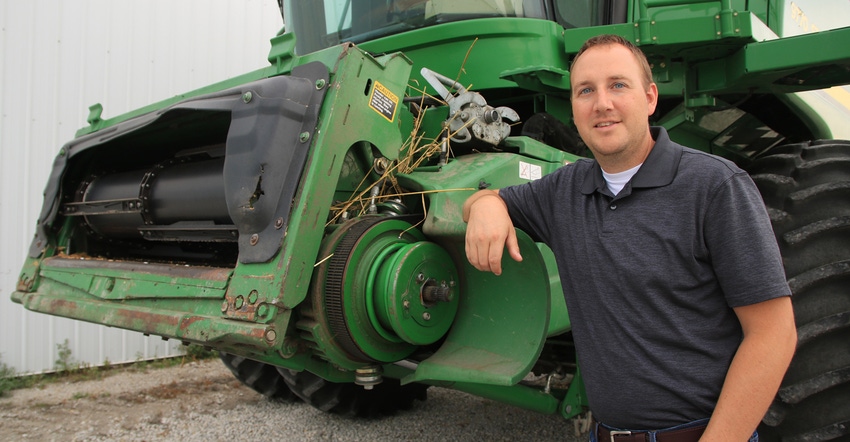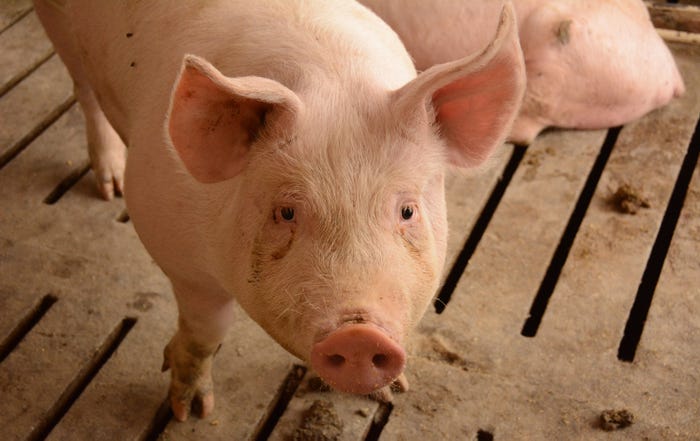
May 11 marked the first time since April 24 that 100% of U.S. pork processing plants were operating, in compliance with President Donald Trump’s executive order to reopen in response to a shortage of meat. According to USDA, they were operating at 71% of capacity, significantly short of 100%.
“It’s up to the Tysons, JBSs, the Smithfields and other processors to incentivize their workers to get to full capacity,” says hog farmer Jamin Ringger, Gridley, Ill. Packers have shut down or reduced capacity as workers stay home due to COVID-19 outbreaks and fear of infection.
Related: Complete coronavirus coverage
Retail prices are up at the counter, and Ringger says the recent exponential progress in reopening capacity shows the companies are using those profits to incentivize workers. While prices for pigs remain flat for the producers, margins for the packers are increasing as grocers and food distributors charge more for pork in the wake of the coronavirus shutdown.
“If that’s what it takes, then so be it,” Ringger says. “It’s for the long run. They can’t make money without incentivizing the workers.” He adds the more capacity that comes on line through improved COVID-19 protocols and worker incentives, the better for the producer.
Contracts still stand
For Ringger, a contract is a contract. He accepted delivery of a new batch of 12-pound weaned pigs in May despite not moving “hardly any” ready-to-market hogs off his farm in April.
“It’s the same for everybody. We might be able to get a load here and there, but we’ve got 1,800 pigs that need to go to market in the next week,” he says, adding a friend from Armington, Ill., is letting him use an empty barn that will allow them to hold on to mature hogs longer. “We’re pretty fortunate to have that.”
Related: Young farmers leverage diversity
The barn bought the Ringgers precious time. They reduced soybean meal rations for their largest hogs in April and also cut out high-protein supplements such as dried distillers grain. In a normal year, they don’t sell much local meat — maybe 10 pigs to hunters and other small-time customers — but the Ringgers sold 300 head in April and early May. That freed up space in their full barns.
Ringger’s wife, Whitney, sold most of the pigs on Facebook, and he says one person called and bought 20 pigs to donate to the Midwest Food Bank.
“We’re hopeful things will turn around,” Ringger says. “We’ll see what happens, but the barn gave us a little time to get rid of the big ones.” He notes that as weaned pigs get bigger, they’ll cut down rations to hold the animals in the barn longer.
Related: Even a grim week has flicker of brightness
USDA is offering Environmental Quality Incentives Program money to hog farmers, reimbursing them $20 per euthanized grown pig and a little under $1 for weaned pigs. Ringger says he would need $150 per pig to break even and is seeking approval for a permit to depopulate a large amount of pigs “in case we need it.”
“To take $20 when we have this much invested, it’s going to be a pretty big financial loss,” he says. “It’s definitely not something we want to do from a financial standpoint, and just a mental health standpoint, so we’re trying to hold on for better prices.”
As Steve Meyer of Kerns and Associates wrote in National Hog Farmer on May 11, “Without some government help, many producers will not be able to absorb this kind of loss. Another massive — and maybe final — round of consolidation looms.”

LARGE LOSS: USDA’s Environmental Quality Incentives Program is offering to reimburse farmers $20 per euthanized grown pigs and a little under $1 for weaned pigs.

With 40 acres of wheat in central Illinois, Ringger says he eventually looks forward to the revenue that harvest will generate. Wheat prices fell less steeply in March than livestock prices. The reason: The restaurant industry is more important to meat than wheat. Forcing sit-down restaurants to serve only takeout meant sales plummeted across the country.
“A lot of people, there’s limits to what they can do. They can grill a pork chop at home, but unless you have a smoker and you know how to smoke ribs, you’re not going to be eating what you usually eat at restaurants,” Ringger says, adding that as restaurants reopen and meet with more demand, they’re also contending with a developing meat shortage that could continue to drive prices higher.
Corn and soybean harvests on the rest of his acreage also will provide income, depending on where prices end up during harvesttime, but there’s potential to earn below the cost of production.
“We’ve bought ourselves time. We’re doing what we can and just taking it day by day,” Ringger concludes. “It’s getting difficult for everyone.”
Read more about:
Covid 19About the Author(s)
You May Also Like




